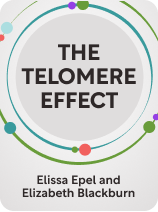

This article is an excerpt from the Shortform book guide to "The Telomere Effect" by Elissa Epel and Elizabeth Blackburn. Shortform has the world's best summaries and analyses of books you should be reading.
Like this article? Sign up for a free trial here.
How does optimism act as a telomerase booster? How can you develop optimism through radical acceptance?
Elizabeth Blackburn and Elissa Epel urge you to work toward a more optimistic mindset, especially when it comes to facing life’s challenges. Instead of dwelling on problems or treating them as insurmountable, optimists view difficulties as temporary hurdles on the path to their goals.
Find out how to be more optimistic to boost telomeres.
Optimism as a Telomerase Booster
To learn how to be more optimistic, you need to perceive challenges as opportunities for growth, rather than as threats. For instance, if you lose your job, it would be natural to fall into a pessimistic mindset of thinking that you’ll never find another job that good, never make as much money as you were making, or that you’ll lose your home before finding another job. However, an optimist would instead see this challenge as a chance to find an even better job and progress their career with a new employer.
(Shortform note: Seeing challenges as chances to improve yourself comes directly from what psychologist Carol Dweck (Mindset) calls a growth mindset. A growth mindset is the belief that abilities and intelligence can be developed through dedication and hard work; for someone with such a mindset, a difficult problem is both opportunity and motivation to improve. Conversely, a fixed mindset assumes that talents and aptitudes are static traits that you can’t significantly improve upon—therefore, someone with a fixed mindset is likely to give up when faced with a challenge, because they don’t think it’s possible to improve themselves enough to overcome that challenge.)
However, the authors add, optimism doesn’t mean that you ignore negative feelings or experiences; it means you acknowledge them, but don’t let them define you or your future. This kind of mindset helps reduce stress and promotes mental well-being, which in turn keeps your cells strong and healthy for as long as possible.
| Develop Optimism Through Radical Acceptance Blackburn and Epel’s principle of acknowledging thoughts without letting them control you is similar to how Tara Brach describes Radical Acceptance in her book of the same name. Therefore, one way to develop a more resilient mindset is to try incorporating Brach’s suggestions into your life. There are two essential parts of Radical Acceptance: recognition and compassion. Recognition, also known as mindfulness in Buddhist traditions, involves clearly understanding what we’re experiencing physically, mentally, and emotionally, without being controlled by those experiences. For instance, if you feel afraid, you can recognize the racing thoughts, bodily tension, and urge to flee, but not act on that impulse—you simply accept the experience as it is, without trying to change or “fix” it. The second aspect of Radical Acceptance, compassion, means responding to yourself with care and tenderness rather than with harsh judgment. Continuing the previous example, you wouldn’t berate yourself for feeling afraid or try to convince yourself that there’s nothing to be afraid of; you’d be kind to yourself, as you might be kind to a dear friend or a child who feels afraid. |

———End of Preview———
Like what you just read? Read the rest of the world's best book summary and analysis of Elissa Epel and Elizabeth Blackburn's "The Telomere Effect" at Shortform.
Here's what you'll find in our full The Telomere Effect summary:
- Why people suffer the effects of old age
- How negative thinking and social isolation speed up the aging process
- Specific habits you can adopt to stay young longer






